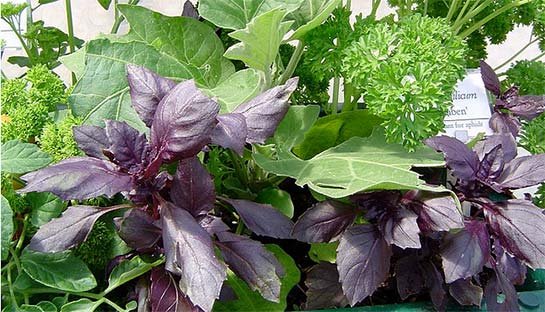So you want to grow some herbs? Well, it’s one of the easiest ways to add some colour to your plot, liven up your meals, and entice lots of beneficial insects into the garden at the same time.
Herb gardening is easy, and there is a great range of herbs you can grow, but they do like different conditions, and so it pays to know what you’re dealing with. And herbs differ from most garden vegetables in that a lot of them are perennials, and come back year after year.
Mint
One of the most obvious perennial herbs, and certainly one of the easiest to grow, is mint. If you want to make mint sauce, or Moroccan mint tea, then you want spearmint; you can also grow peppermint, for spicing up desserts and brewing a tea to aid digestion. There is a myriad of mints beyond that, with slightly different flavours and textures: apple mint, orange mint, chocolate mint… they all have more niche uses, but are just as easy to grow. And there are some mints that aren’t grown for their culinary use – eau de cologne mint is great for scenting bath water, and buddleia mint for attracting butterflies.
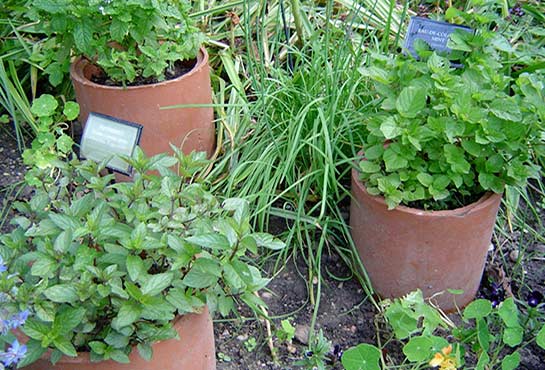
Mints don’t mind shade, and like being well-watered. They are thuggish plants, spreading far and wide if left unchecked; it’s often best to keep them under control in a container, although they’ll need annual repotting or dividing to keep them happy – they don’t like to feel cramped.
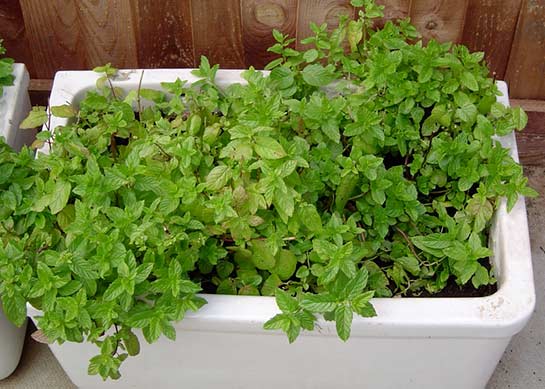
Harvest leaves as and when you want them; you’ll be making your own mojitos in no time!
Rosemary, Lavender, Oregano and Thyme
Many of the other familiar perennial herbs – rosemary, lavender, oregano and thyme – like an entirely different set of conditions. They’ll thank you for your sunniest position, and soil with good drainage that keeps their roots from getting waterlogged. There are many varieties of rosemary, of two different types – upright, tall plants, or prostrate ones that like to drape over edges. Like lavender, they’ll need annual trimming to stop them becoming too big and woody. Thyme plants can be clumping, or spreading, but are usually well-behaved; oregano and marjoram need to be cut back after flowering – they get very straggly.

Together these plants are often referred to as Mediterranean herbs, as that’s where they originate, and it gives you a clue as to the kind of conditions they enjoy. You can keep them in a pot on the patio if you like, they don’t mind that. But don’t forget to water them in dry weather; they can cope with drought, but not indefinitely.
Many perennial herbs can be grown from seed, but as you normally only want one or two it’s usually easier and just as cheap to buy small plants and grow those on. If you want a particular variety, a plant may be your only choice as they are grown from cuttings.
Annual herbs can be bought as plants, but as they only live a year and are usually easy to grow from seed, you may prefer to invest in a few seed packets.
Some of the herbs (and vegetables) that we grow as annuals are actually biennials, meaning that they flower in their second year (and then die). Usually we eat them before that happens, but it’s useful information to know if you’d like to try saving your own seeds. Parsley is biennial, and if you leave the plants in place they will flower and become a magnet for beneficial insects. You can either pull them up when the seeds start to form, or let them self-seed for next year’s crop.
Parsley
Parsley is a common garden herb, and very useful in the kitchen. It’s infamous for being slow to germinate outdoors, and the answer is simply to grow it inside where the temperature is more consistent, and you can keep the compost damp.
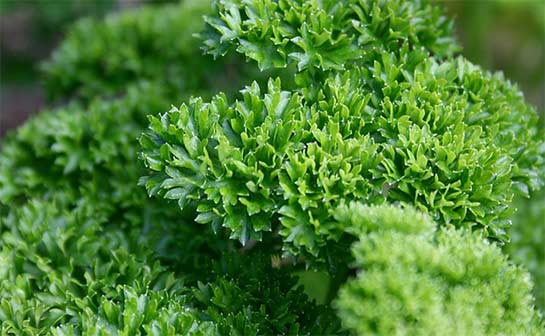
There’s an increasing number of varieties on offer; the traditional English curled parsley makes a lovely garnish (and looks good enough to go in the flower border), but Italian flat-leaved parsley is reputed to have the better flavour.
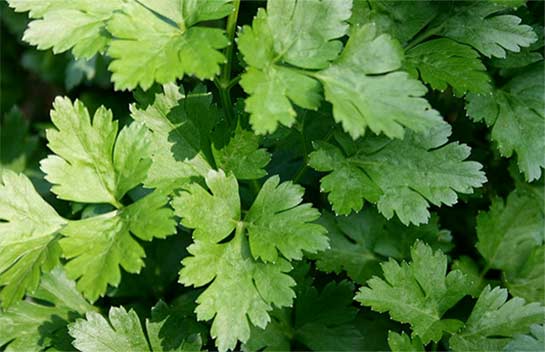
You can make two sowings a year; one in spring supplies fresh parsley all summer, and a sowing around midsummer gives you plants that should stand through the winter and in to the following spring.
Coriander
Coriander is grown in a very similar way, although it’s not quite as cold-hardy as parsley. It likes full sun, and plenty of water – a touch of drought will encourage it to flower and set seed, at which point the leaves aren’t worth harvesting. All is not lost, though, because if you leave the plants they will set seed (coriander is an annual) that you can harvest when it ripens – coriander is both a herb and a spice. You can buy slow-bolting varieties, to lengthen the leaf harvest period, but it also pays to sow several batches of coriander if you’d like a regular supply.
Basil
Basil loves heat, and sunshine, and a good water supply. It’s easy to grow outdoors in the summer, but you can bring it inside onto the kitchen window for the winter. Again, it’s easy to grow from seed, and there are more varieties that you might think – although many of the more fancy ones are considerably more tender their commoner cousins. A good place to start is sweet basil, which is ideal for pesto and tomato salads.

There are also varieties with a similar flavour, but larger leaves. Greek basil has tiny leaves, but packs a real punch in the flavour department, and there are red or purple varieties that really stand out. Regular harvesting or trimming will help to keep them from flowering and maximise leaf production, but there’s also a ‘perennial’ basil variety called ‘Perpetuo’ which doesn’t flower. It has very attractive, variegated leaves and makes a lovely houseplant. It’s worth keeping an eye out for a plant; once you have one it’s easy enough to propagate from cuttings, so you can raise your own plants and share them with friends.
